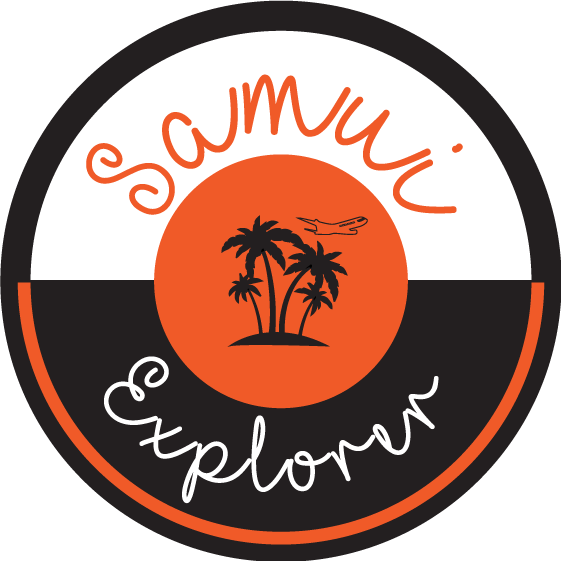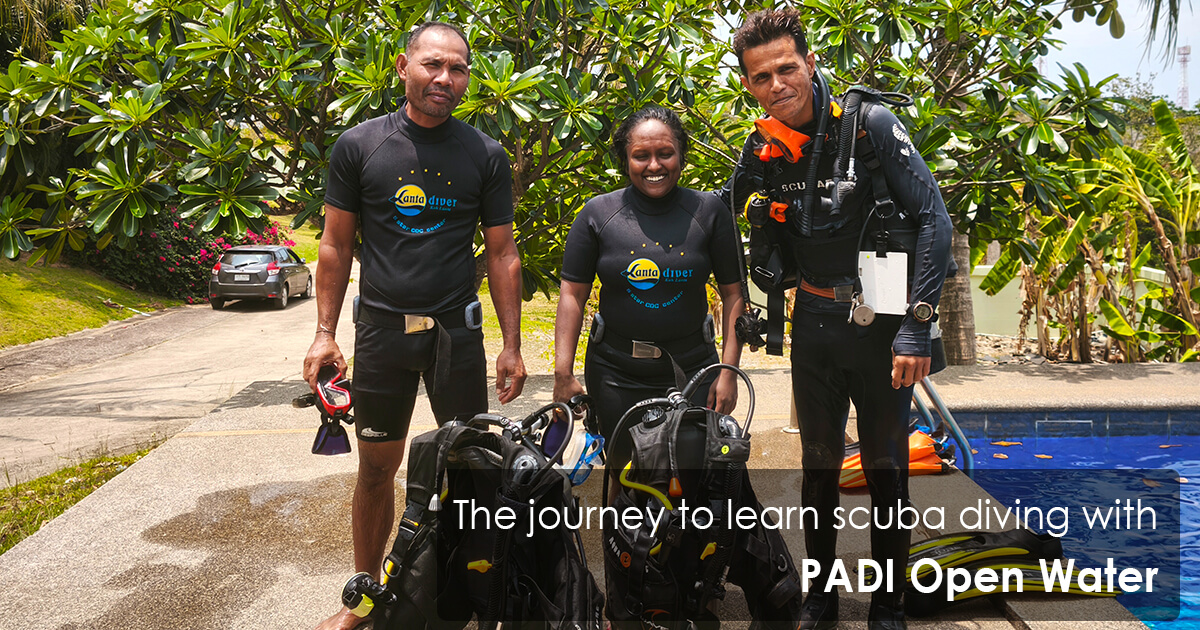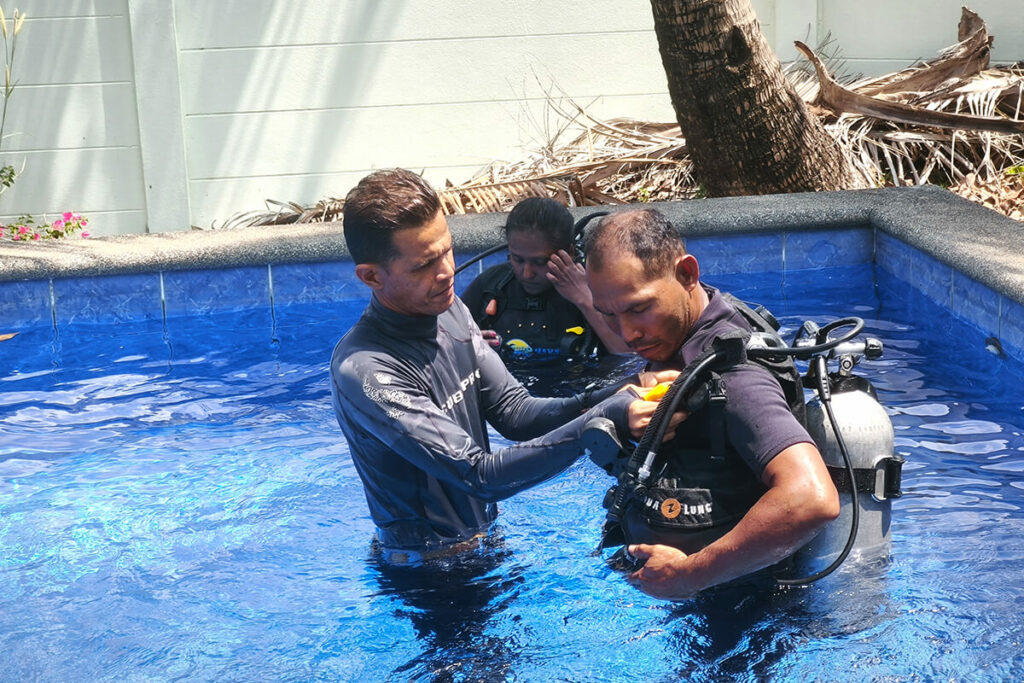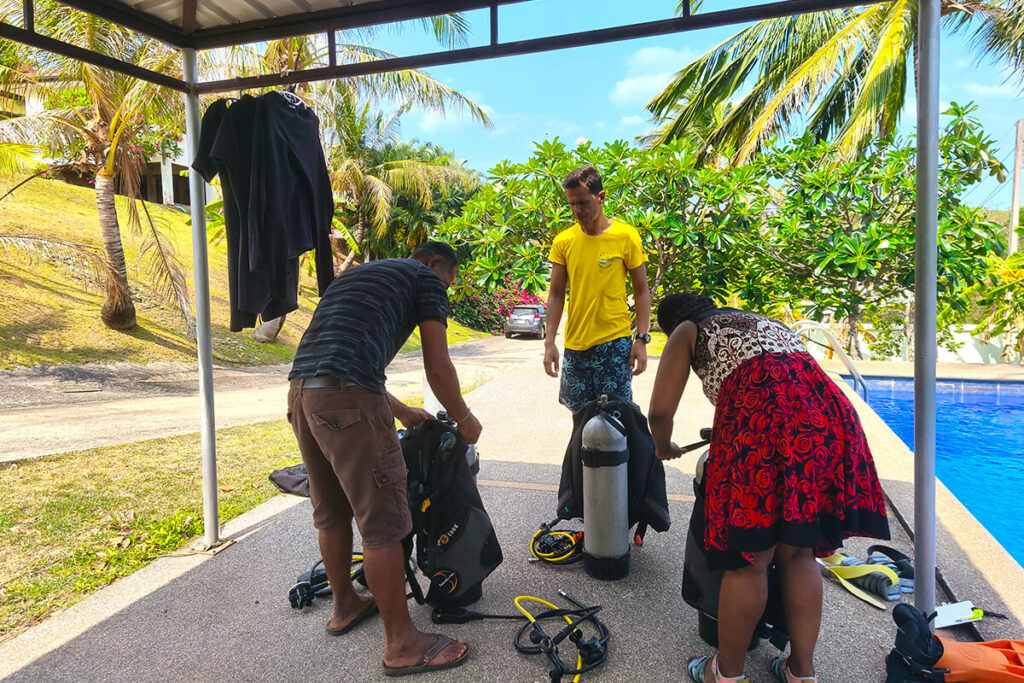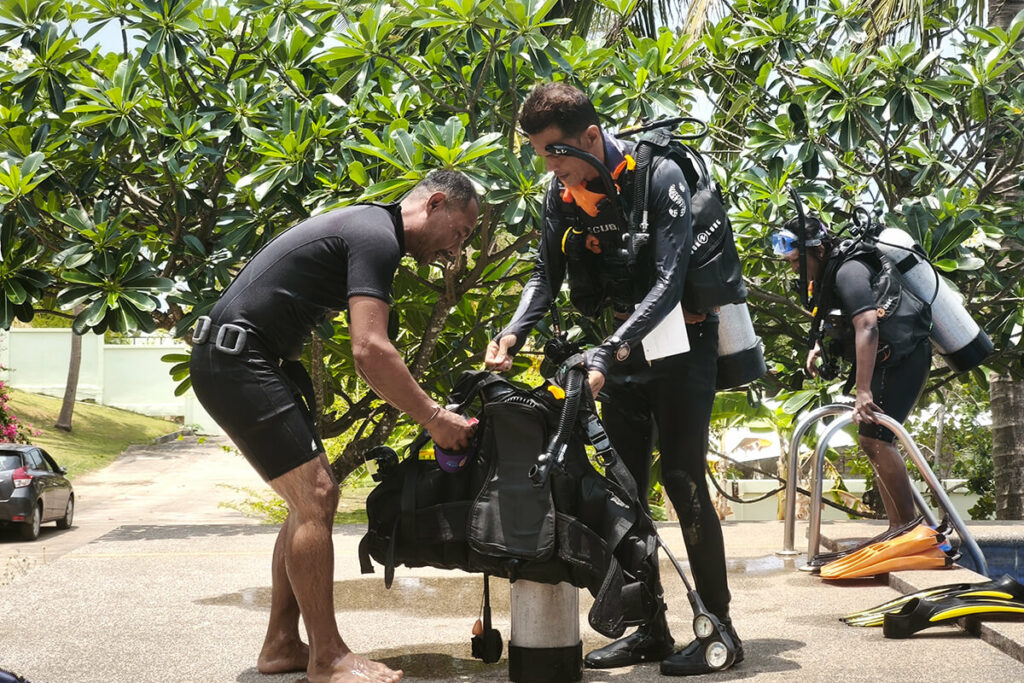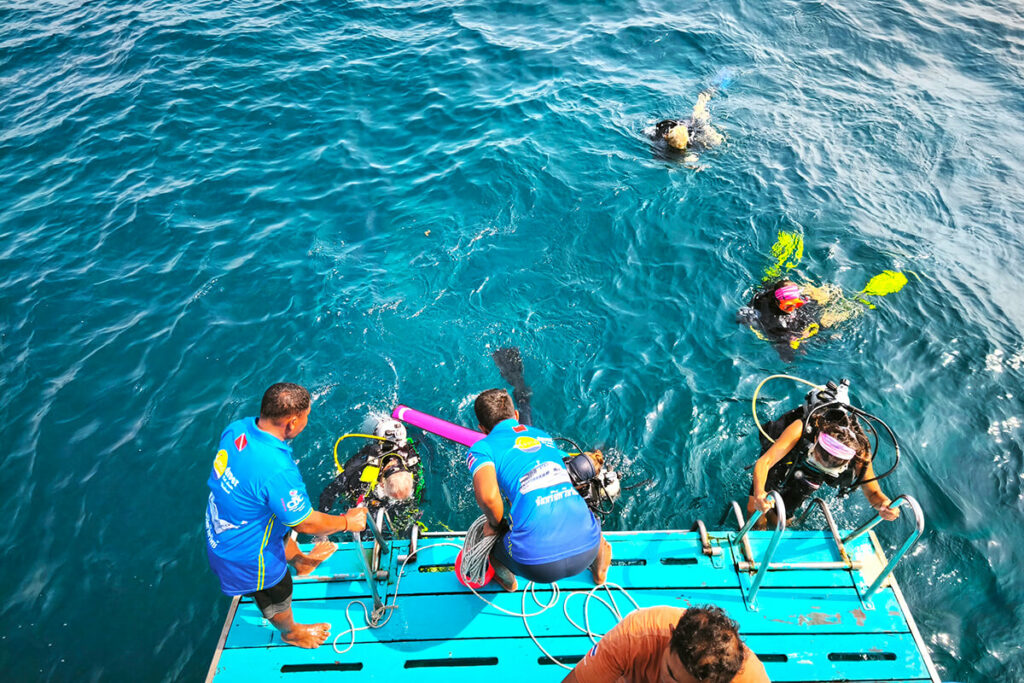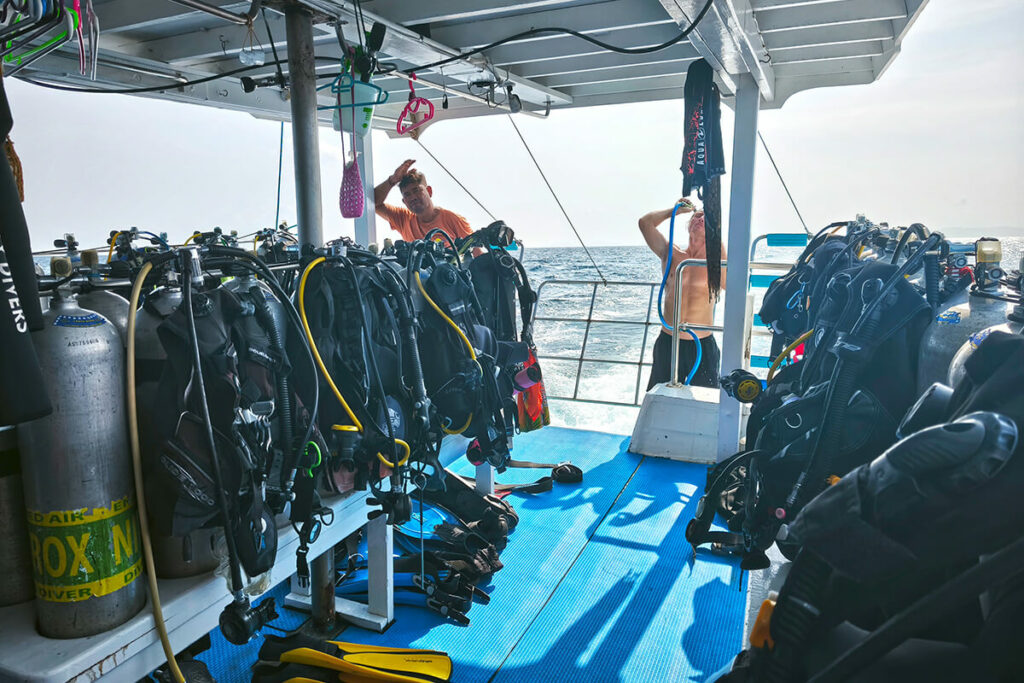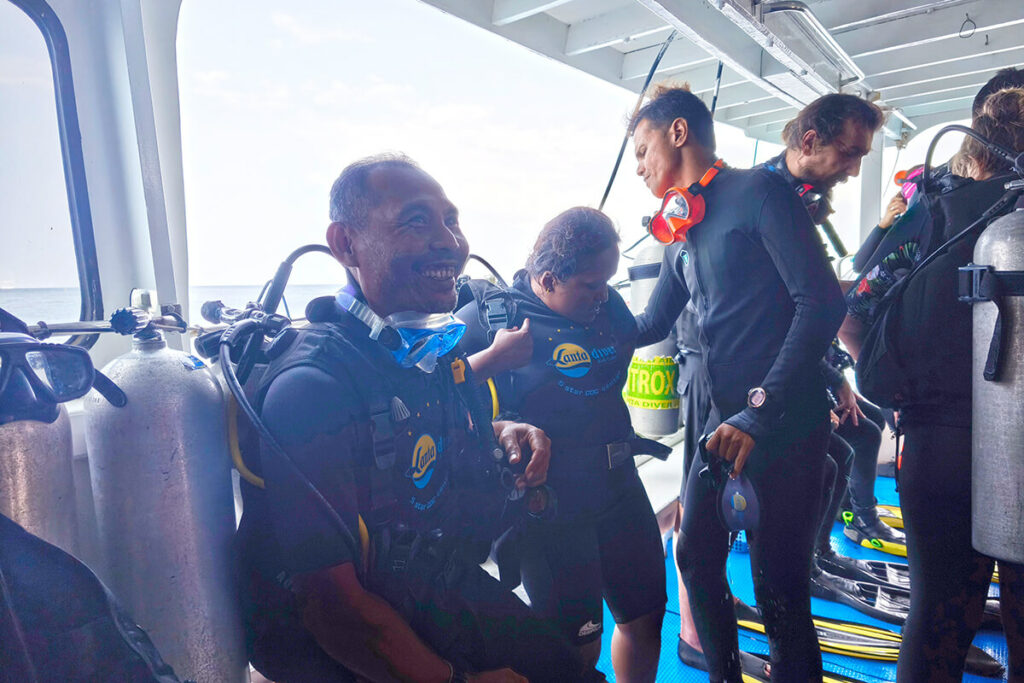The journey to learn scuba diving with PADI Open Water invites you to a new world of adventures and meeting like-minded people to share experiences.
Have you been considering taking the plunge but are a bit hesitant, not knowing what to expect?
The PADI Open Water Diver course requires full commitment and 100% focus on learning. However, it isn’t overly difficult to complete, with people finding it rewarding.
The PADI Open Water Dive course is available to everyone with a varied level of fitness and swimming abilities; being comfortable in the water is most important.
About Us: Samui Explorer Tour Agency
Samui Explorer is an online tour agency, a family-owned business of 15 years based in Southern Thailand. My Thai husband and I have successfully operated our business since 2012, selling the best tours and designing travel plans for our customers around Southern Thailand.
Recently, in March 2025, we decided to promote scuba diving around Southern Thailand. We are offering diving courses, organising diving trips to the best dive sites around the South, and planning diving holidays.
I’m a certified advanced open water diver since 2002, and recently my Thai husband completed the PADI Open Water dive course.
With this, our mission is to dive at all the best dive sites around Southern Thailand, enabling us to recommend the best diving and destinations for our customers.
What should you expect?
The critical academic side is the first step to learning how to scuba dive on the PADI open water course. The e-learning also comes in various languages; you can choose your preferred language.
E-learning makes this easier by allowing you to study at your pace before beginning the practical portion of the PADI open water dive course.
The e-learning structure is as follows:
It consists of five chapters; at the end of each chapter is a multiple-choice exam. The pass rate is 75%, and until you have passed, you can’t move forward to the next chapter.
You simply keep returning to the start of each chapter until you have passed 75%. Chapter five is the final exam. The exam is a multiple-choice test that covers five chapters. If you do not achieve a pass rate of at least 75%, please feel free to try again.
After the exam there are additional chapters to learn about using a dive computer and understanding deeper the RDP (recreational dive planner).
Throughout the chapters, there are videos to watch for a more profound understanding of each chapter. For instance, you can watch videos on underwater sign language and natural buoyancy.
Day 1: Next step to the PADI Open Water Dive Course
The journey to learn scuba diving with PADI Open Water continues to the practical side: pool work.
A day with your instructor in the pool, learning how to
- Learn about your equipment
- How to set up your equipment
- How to maintain natural buoyancy underwater
- How to clear your mask when water gets in
- How to remove your mask and put it back on underwater
- How to clear water from your mouth after removing the regulator and putting it back into your mouth.
- How to find your regulator if it is knocked out of your mouth
- How to communicate with your buddy underwater using sign language
- How to remove your weight belt in case of emergency
- How to do a controlled descent
- How to do a controlled ascent?
- How to do an uncontrolled ascent
- How to do a buddy’s breathing ascent—shared air.
- How to remove and then put on your equipment underwater
Your instructor will remain with you throughout the three days of practical learning to help you achieve your PADI Open Water dive certificate.
Day 2: Diving from the boat
This part of the PADI Open Water dive course is where most feel anxious. Although the course is not physically demanding, some participants may experience anxiety or fear in the water, which is normal. Instructors are there to assist, showing patience and encouragement throughout your dives and on board.
Before training begins, we will show you around the boat so you can familiarise yourself and unwind with coffee.
Being physically and mentally prepared for the course can contribute to a smoother and more enjoyable experience, so relax and prepare mentally.
The PADI Open Water Dive course stresses safety, with diving instructors always ensuring that their students are comfortable, confident in their abilities, and mentally prepared for their next journey.
- Your instructor will go over setting up your equipment.
- You will set up your equipment under supervision.
- Carry out safety checks on diving equipment.
- Carry out buddy checks on diving equipment.
Your dive instructor explains the activities you will have to practice, the depths, and what marine life you can expect to see.
Another skill your dive instructor will teach you is getting from the boat to the water. There are a few different ways of entering the water, and your choice depends on the boat you’re exiting.
Most diving will be from a boat or speedboat; therefore, the STRIDE will be used.
Once in the water, your dive instructor will start the controlled descent.
Days 2 and 3: Practice the skills needed for open-water diving.
The 2-day, 4-dive period will cover all the skills from Day 1 in the pool. At the end of each dive, the dive instructor will provide feedback and go over various tasks to ensure that you’re fully aware of what you did incorrectly and how to improve.
The final step on the journey to learn scuba diving with PADI Open Water.
Celebrate and welcome to your amazing new adventure of scuba diving around southern Thailand and the globe!

Why scuba diving?
Not everyone can scuba dive, but those who love snorkeling and are fascinated by the ocean should.
For me, being up close and personal—if you like—with marine life was my desire, and I certainly got up close and personal on many occasions!
Scuba diving is also a fantastic social network; meet new friends around the globe and chat for hours about dives and the dive of the day.
Planning a scuba diving holiday around Southern Thailand
You are welcome to contact Jack or Michelle directly about dive courses, the best destination to start, or planning a diving holiday itinerary.
For full information on all dive centres, courses, and trips around Koh Samui, Koh Tao, Khao Lak, Phuket, Krabi, or Koh Lanta, use this link Scuba diving around Southern Thailand.
